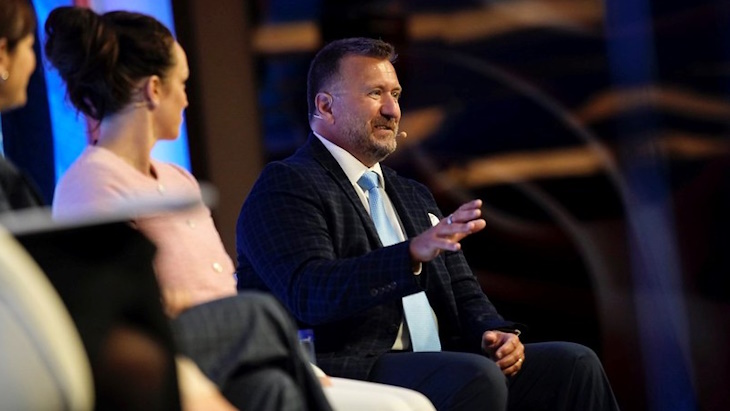KazAtomProm to establish trading arm and treble economic value added
 KazAtomProm says it plans to follow the example of other major uranium mining companies and create a trading subsidiary. The world's biggest uranium producer announced the plan as part of its "transformation" strategy.
KazAtomProm says it plans to follow the example of other major uranium mining companies and create a trading subsidiary. The world's biggest uranium producer announced the plan as part of its "transformation" strategy.KazAtomProm says it plans to follow the example of other major uranium mining companies and create a trading subsidiary. The world's biggest uranium producer announced the plan as part of its "transformation" strategy.
 |
| KazAtomProm executives announce strategic changes (Image: Kazatomprom) |
The strategy was unveiled on 16 October following the approval of the state-run Kazakh company's board of directors.
Umirzak Shukeyev, chairman of Kazakhstan's sovereign wealth fund, said the key objectives of the strategy include "trebling the company's value" by 2025. Samruk-Kazyna, which is KazAtomProm's sole shareholder, was launched in 2008 to modernize Kazakhstan's economy and help attract foreign investors. It has influence over hundreds of state companies in the country, including KazAtomProm and KazMunayGaz.
KazAtomProm chairman Askar Zhumagaliyev added that the company plans "to become the leading supplier of natural uranium on the world market, to diversify production at the front end of the nuclear fuel cycle, in particular, to start production of fuel assemblies".
"A lot of attention will be paid as part of the transformation to strengthening [KazAtomProm's] marketing operations," Zhumagaliyev said.
In order to strengthen control of KazAtomProm's production process, all the offices of its mining subsidiaries are to be transferred from Almaty to Shymkent and Kyzylorda. Some 27 non-core businesses are to be spun off from the company by 2019.
These measures should lead to an increase in the company's economic value added (EVA) to 32 billion tenge ($116 million) by 2025, Zhumagaliyev said. In finance, EVA is the profit a company makes less the cost of financing its capital.
Zhumagaliyev, Kazakhstan's former deputy minister for investment and development, was appointed the new chief executive officer of KazAtomProm in May. Zhumagaliyev's appointment followed the unexpected death of the company's previous CEO and chairman Nurlan Kapparov, who suffered a heart attack and died on 26 March during a working visit to China.
Researched and written
by World Nuclear News
_59102.jpg)
_49833.jpg)

.jpg)






_88592.jpg)

